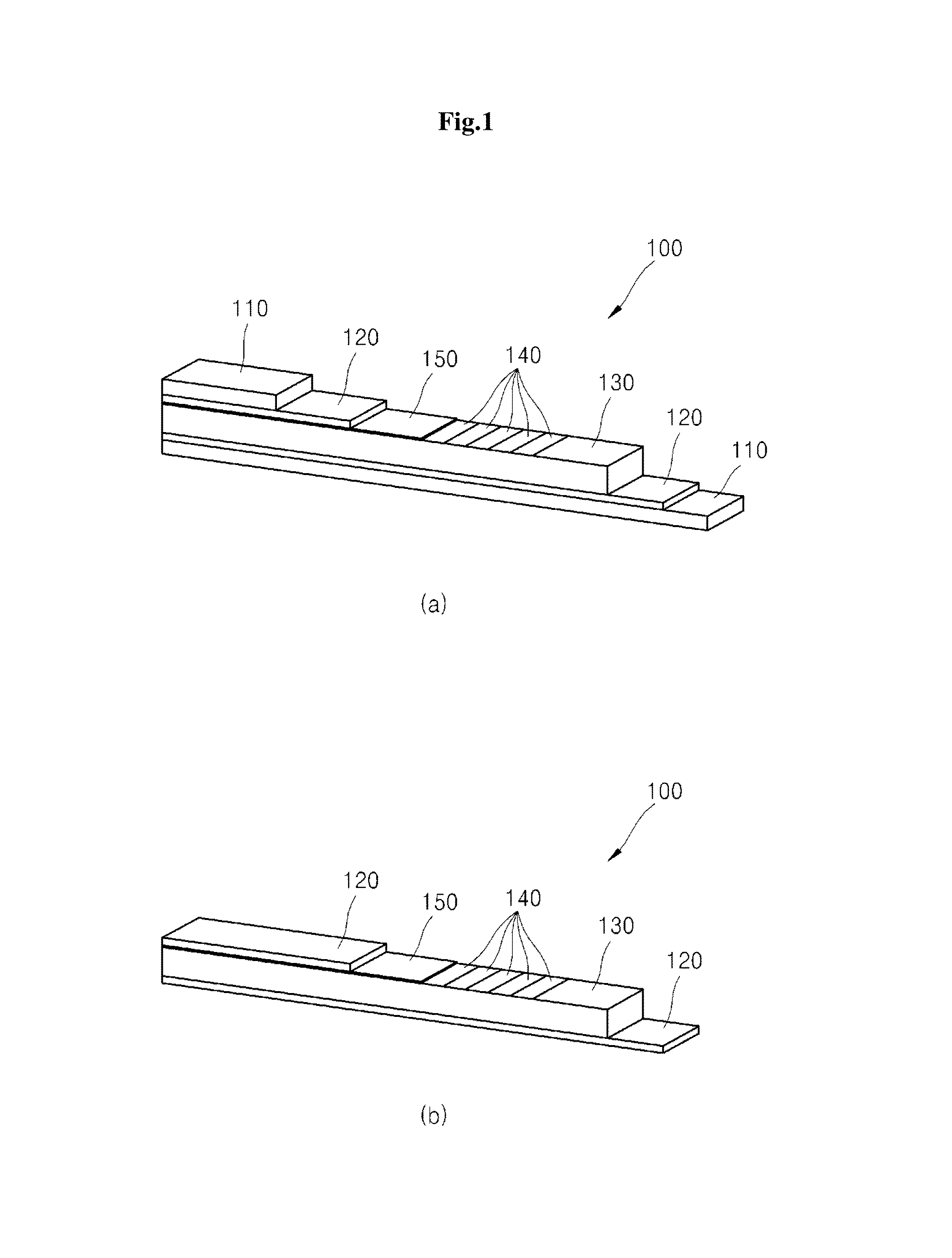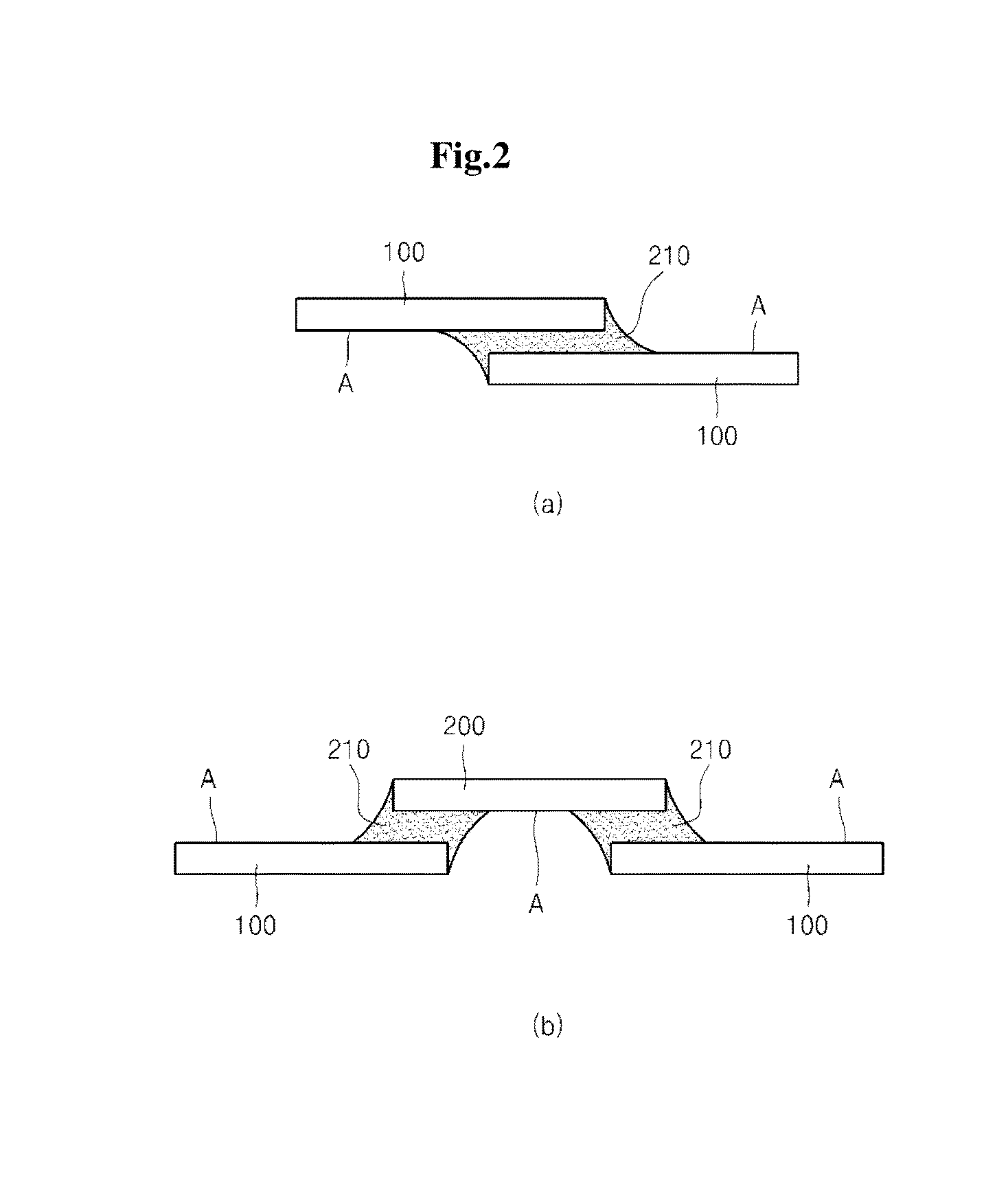METHOD OF PERSISTENT CURRENT MODE SPLICING OF 2G ReBCO HIGH TEMPERATURE SUPERCONDUCTORS USING SOLID STATE PRESSURIZED ATOMS DIFFUSION BY DIRECT FACE-TO-FACE CONTACT OF HIGH TEMPERATURE SUPERCONDUCTING LAYERS AND RECOVERING SUPERCONDUCTIVITY BY OXYGENATION ANNEALING
a high temperature superconductors and current mode splicing technology, applied in the direction of superconducting magnets/coils, magnetic bodies, connection contact material materials, etc., can solve the problems of high resistance, difficult to maintain superconductivity with perfect continuity and uniformity after splicing, and high resistance, so as to achieve excellent superconductivity and reduce the duration of annealing
- Summary
- Abstract
- Description
- Claims
- Application Information
AI Technical Summary
Benefits of technology
Problems solved by technology
Method used
Image
Examples
Embodiment Construction
[0036]Hereinafter, exemplary embodiments of the present invention will be described in detail with reference to the accompanying drawings.
[0037]FIG. 3 is a schematic showing 4 kinds of splicing method of 2G ReBCO HTSs through direct contact of high temperature superconducting layers.
[0038]As in one example shown in FIG. 3 (a), two strands of 2G ReBCO HTSs 100 to be spliced may be disposed to face each other and directly spliced to each other (Lap joint splicing). In addition, as in examples shown in FIGS. 3 (b), (c) and (d), two strands of 2G ReBCO HTSs may be spliced to each other via a third 2G ReBCO HTS piece 200. In these examples, the 2G ReBCO HTSs may be spliced to each other via the third 2G ReBCO HTS piece 200 in various ways, for example, by splicing the third 2G ReBCO HTS piece 200 onto the two strands of 2G ReBCO HTSs 100 arranged linearly (bridge splicing) as shown in FIG. 3 (b), by splicing the third 2G ReBCO HTS piece 200 onto the two strands of 2G ReBCO HTSs 100 arran...
PUM
| Property | Measurement | Unit |
|---|---|---|
| diameter | aaaaa | aaaaa |
| diameter | aaaaa | aaaaa |
| pressure | aaaaa | aaaaa |
Abstract
Description
Claims
Application Information
 Login to View More
Login to View More - R&D
- Intellectual Property
- Life Sciences
- Materials
- Tech Scout
- Unparalleled Data Quality
- Higher Quality Content
- 60% Fewer Hallucinations
Browse by: Latest US Patents, China's latest patents, Technical Efficacy Thesaurus, Application Domain, Technology Topic, Popular Technical Reports.
© 2025 PatSnap. All rights reserved.Legal|Privacy policy|Modern Slavery Act Transparency Statement|Sitemap|About US| Contact US: help@patsnap.com



